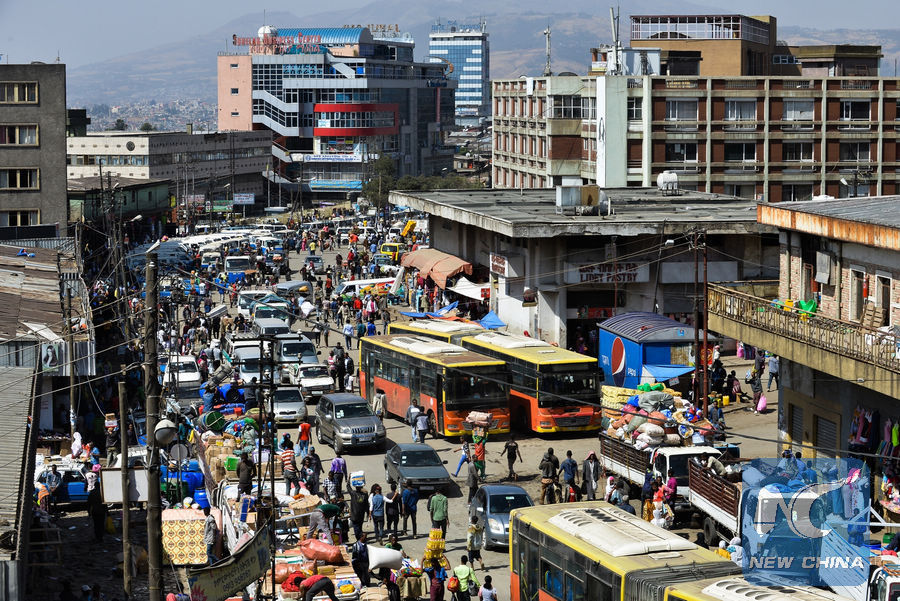
Photo taken on Feb. 22, 2017 shows a view of the Merkato open-air market in Addis Ababa, capital of Ethiopia. Merkato is the biggest open-air market in Africa and employs an estimate of 13,000 people in 7,100 business entities. (Xinhua/Michael Tewelde)
ADDIS ABABA, April 19 (Xinhua) -- A total of 669 people, most of them civilians, died in political unrest in parts of the three most populous regions of Ethiopia in 2016, according to a report by a government watchdog.
The government mandated Ethiopian human Rights Commission (EHRC) in a report presented by its head Dr. Adisu Gebregzbaher to the Ethiopian parliament on April 18 says, the biggest number of deaths occurred in Ethiopia's largest state Oromiya, with the deaths of 462 civilians and 33 security forces.
Deadly protests by Oromos, Ethiopia's largest ethnic group making about 35 percent of Ethiopia's estimated 100 million population, erupted in November 2015 and continued until late 2016.
Initially starting as a protest against the expansion of the capital city Addis Ababa into Oromo villages, the protest soon turned into complaints against what many Oromos perceive as political and economic disenfranchisement.
The Oromo protests were then joined in June by Ethiopia's second largest ethnic group, the Amhara's, at around 28 percent of the population, complaining about territorial redistricting of "historic" Amhara land to neighboring Tigray region 25 years ago. The EHRC report says 110 civilians and 30 security forces died in the Amhara region unrest.
Many Amharas also complain about what they call the political and economic dominance of the Tigray ethnic group, who makes up around 6 percent of Ethiopia's population.
The commission's focus on the unrest in the country's third most populous region southern regional state was focused on a small area, Gedeo zone, where ethnic Gedeo's in October 2016 attacked the properties of migrants in a dispute about ownership of land and business. The commission says 33 people died in the unrest.
EHRC in its finding stated the security forces largely gave a proportionate response to the unrest although it single out several occasions where it said excessive force was used.
The unrest, particularly in Amhara and Oromiya regions, were dubbed by analysts as the worst the ruling party Ethiopian People's Revolutionary Democratic Force (EPRDF) had faced since it came to power in 1991.
After a clash between congregants and security forces led to a deadly stampede at an Oromo religious festival in October 2016, the Ethiopian government declared a six months martial law.
That emergency decree, which since then has been renewed for another four months, seemed to have calmed the situation in the country although tensions persist.

